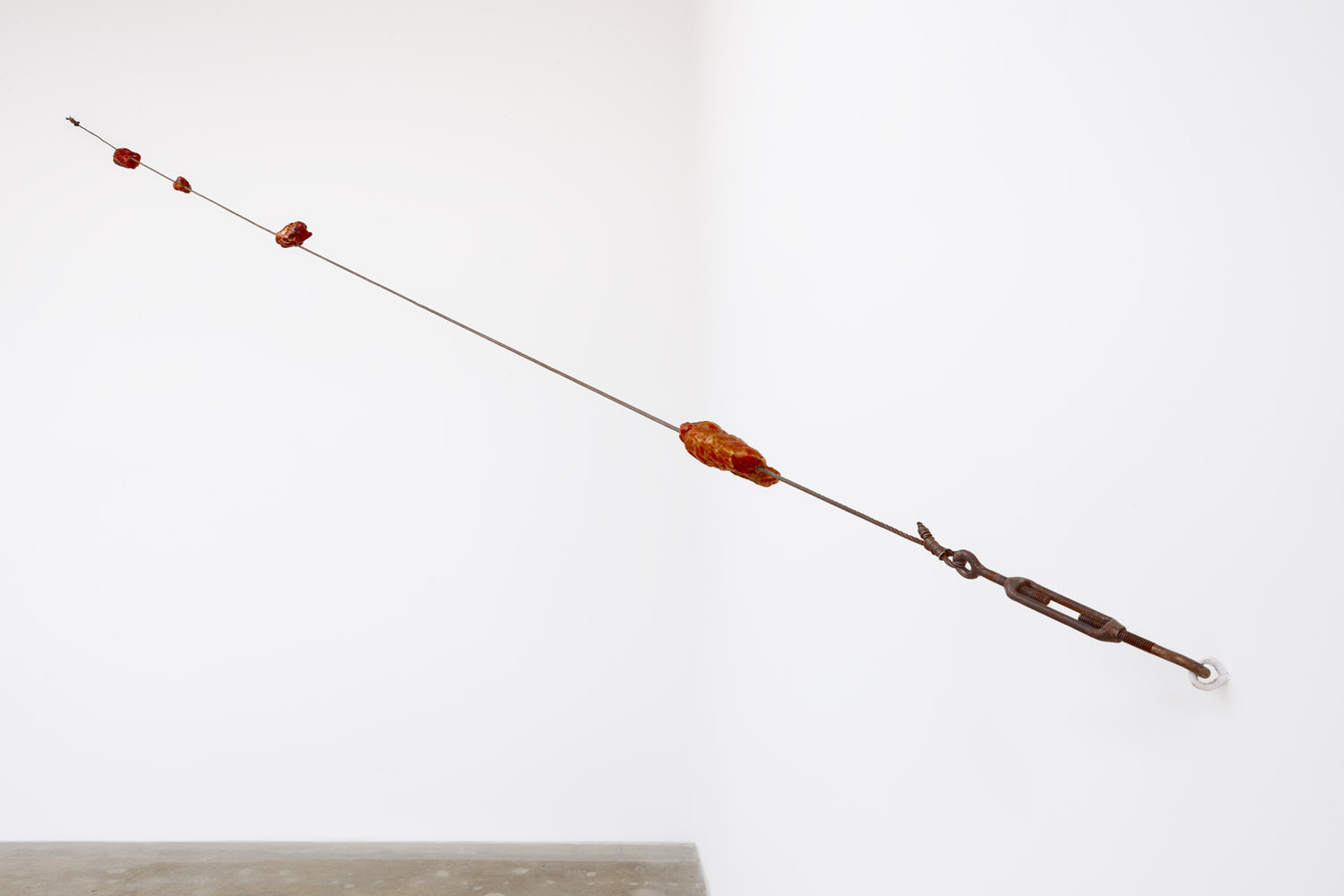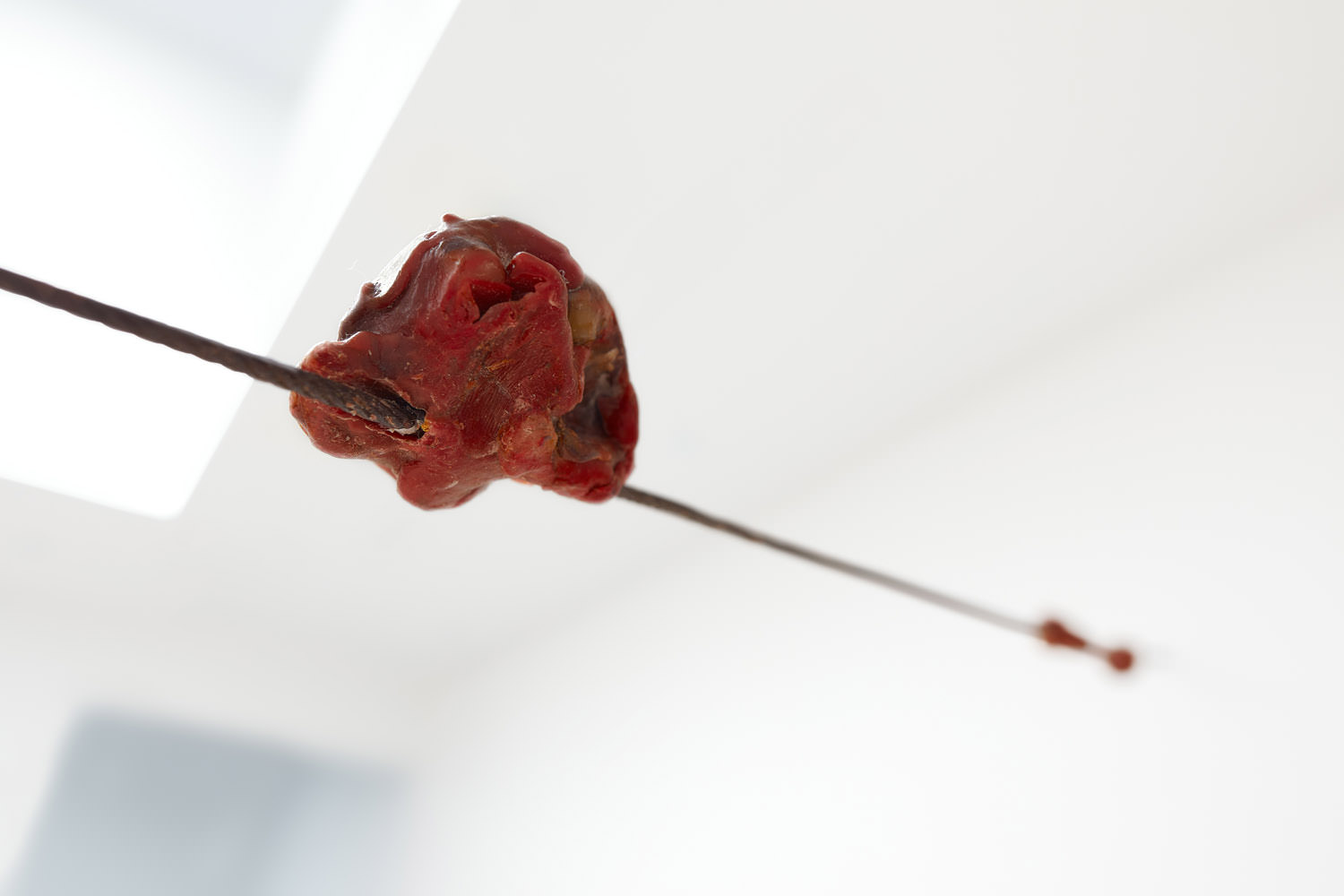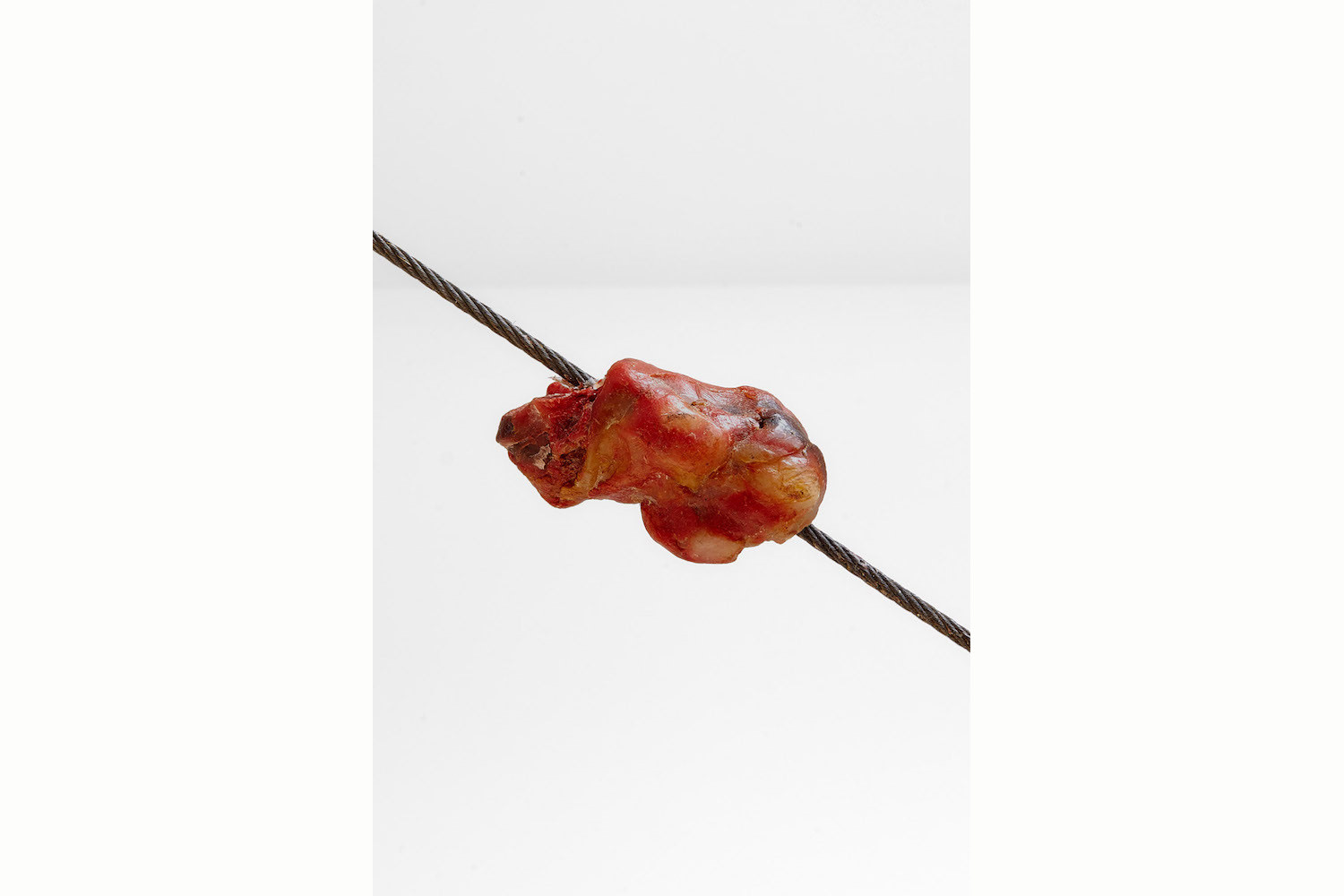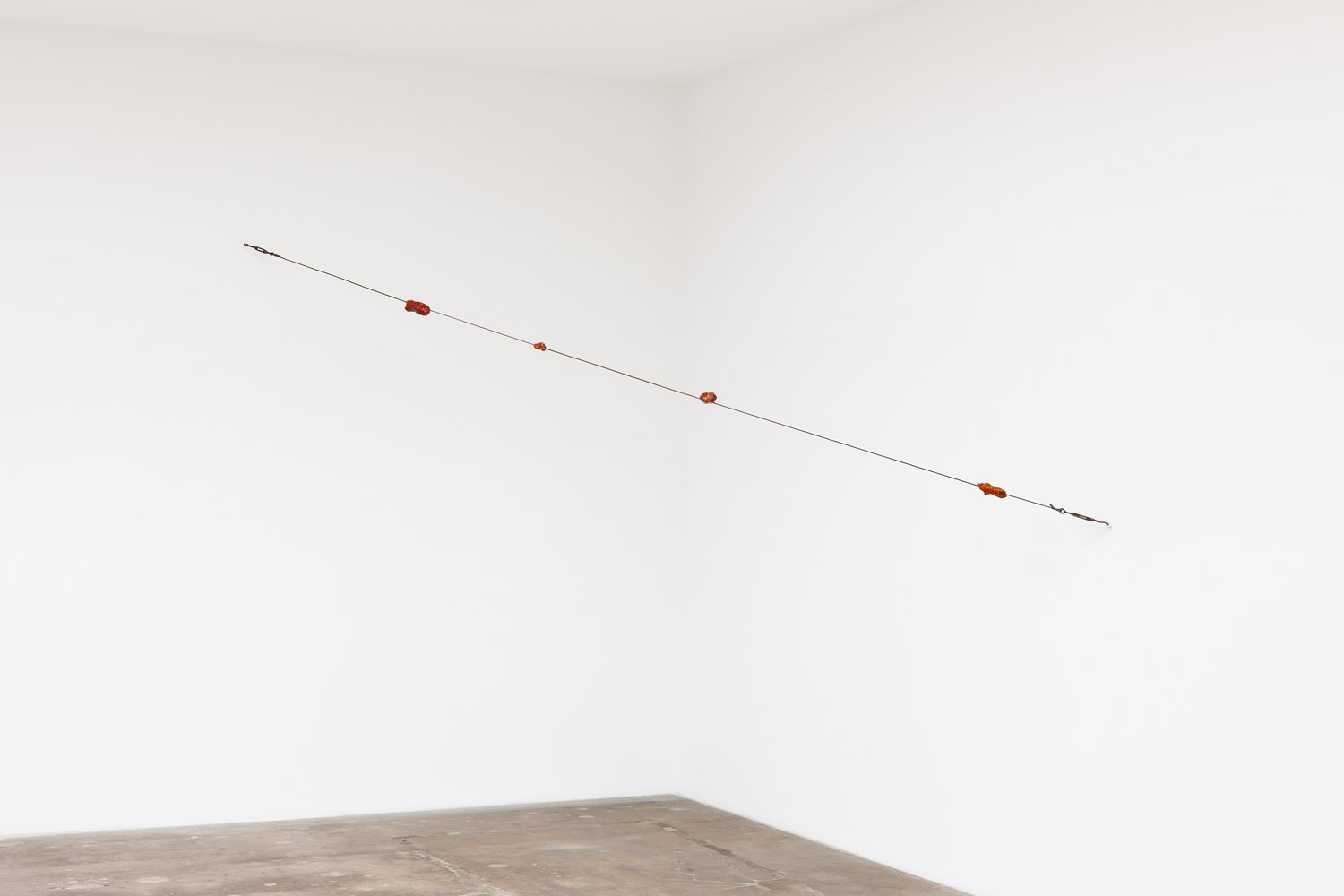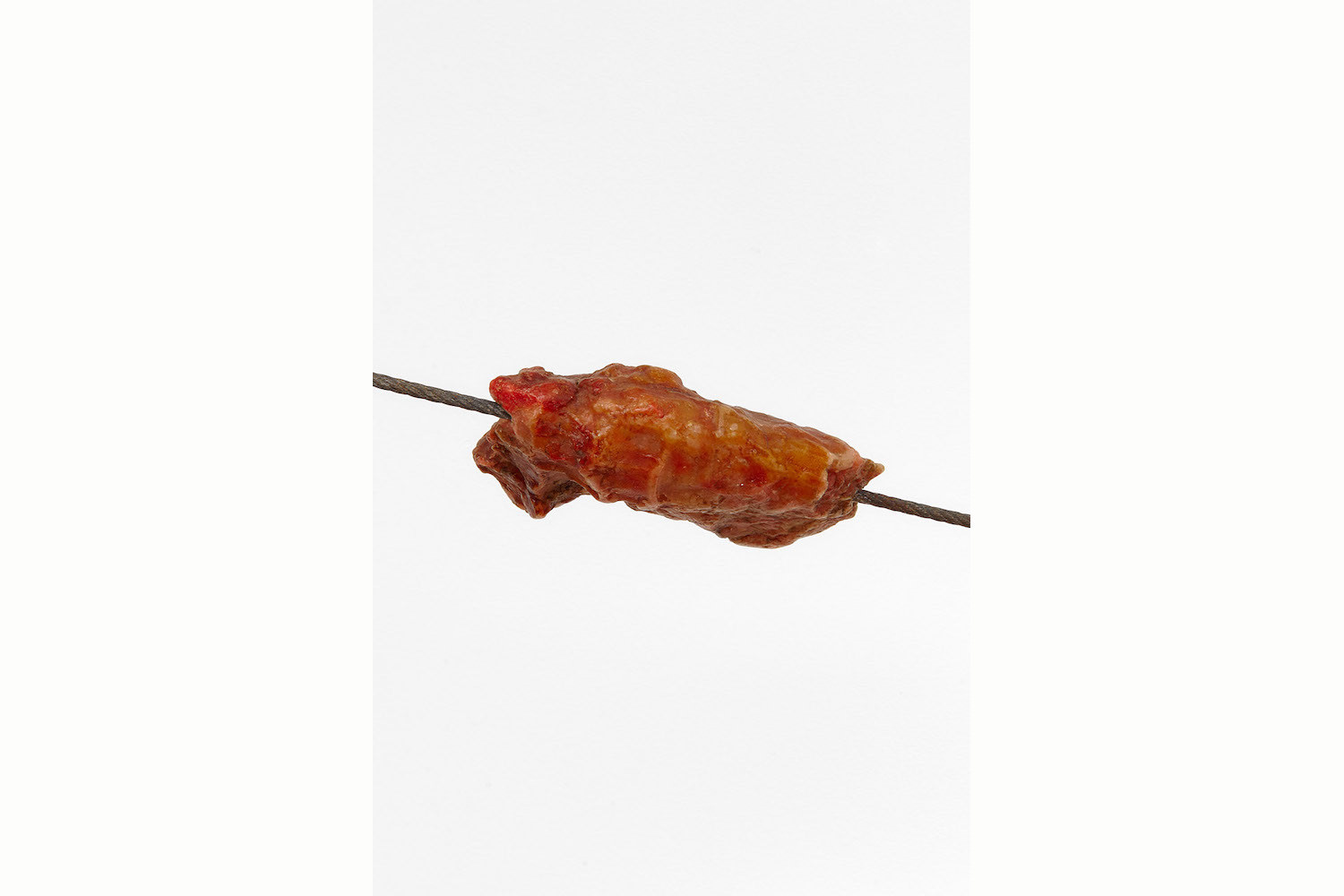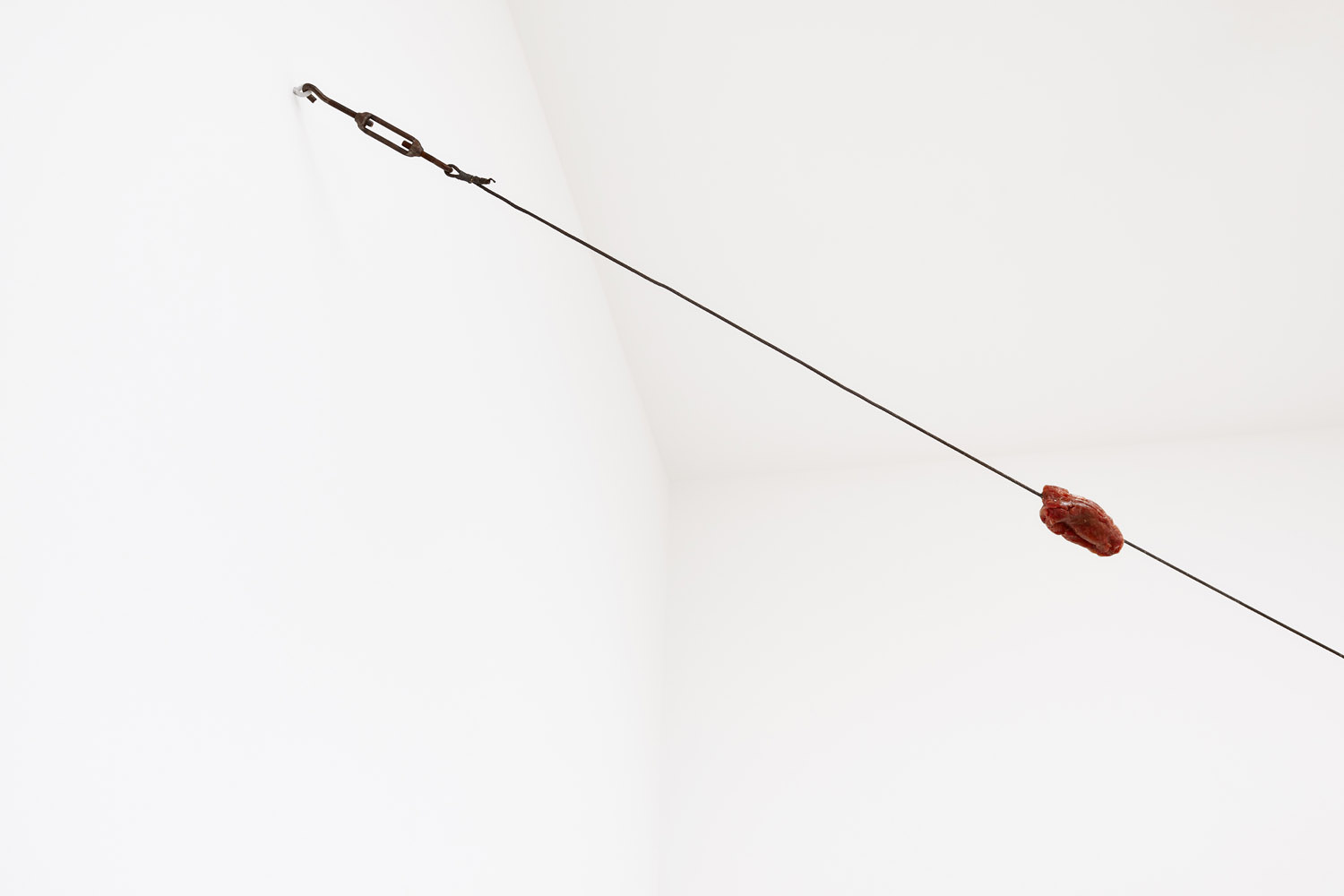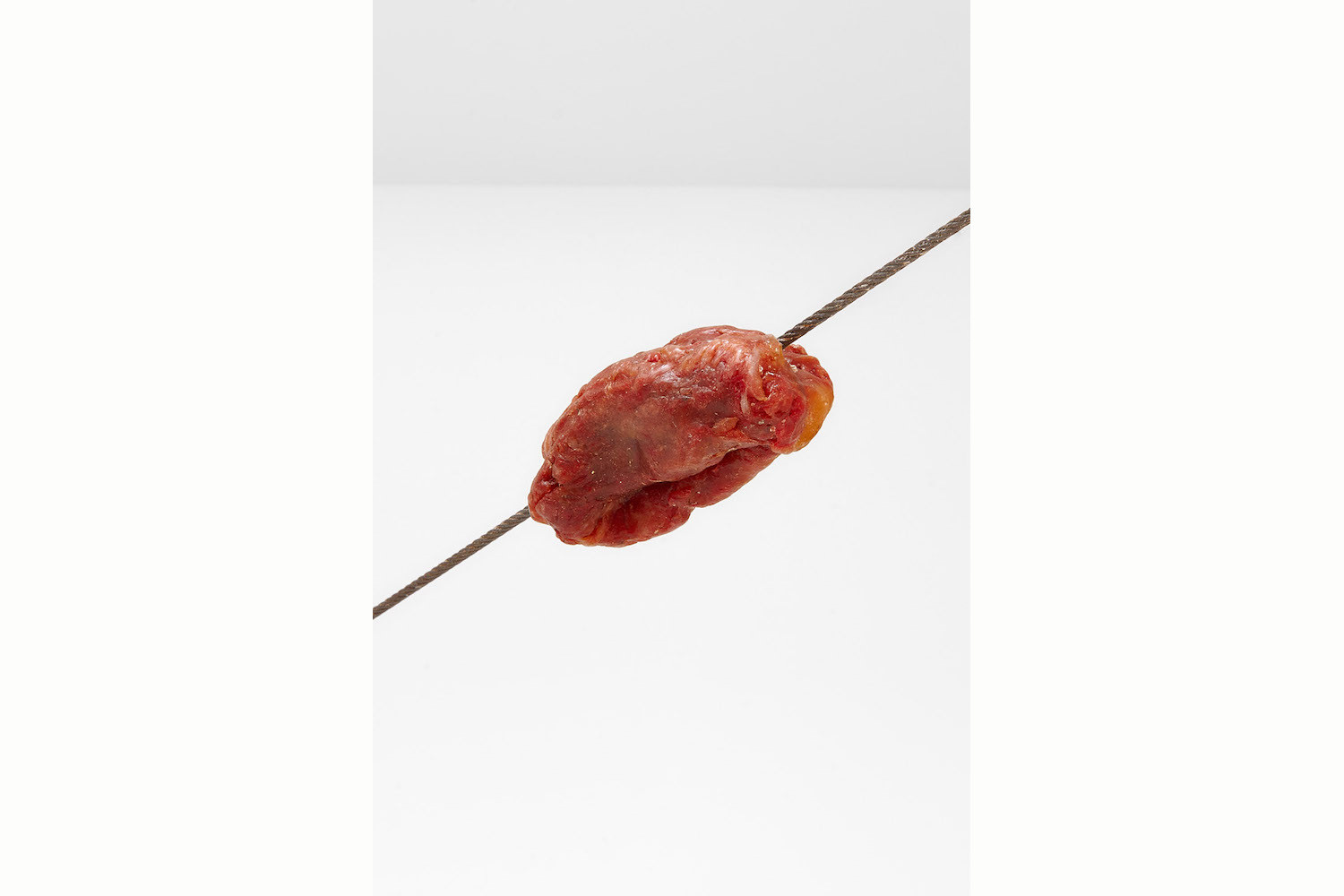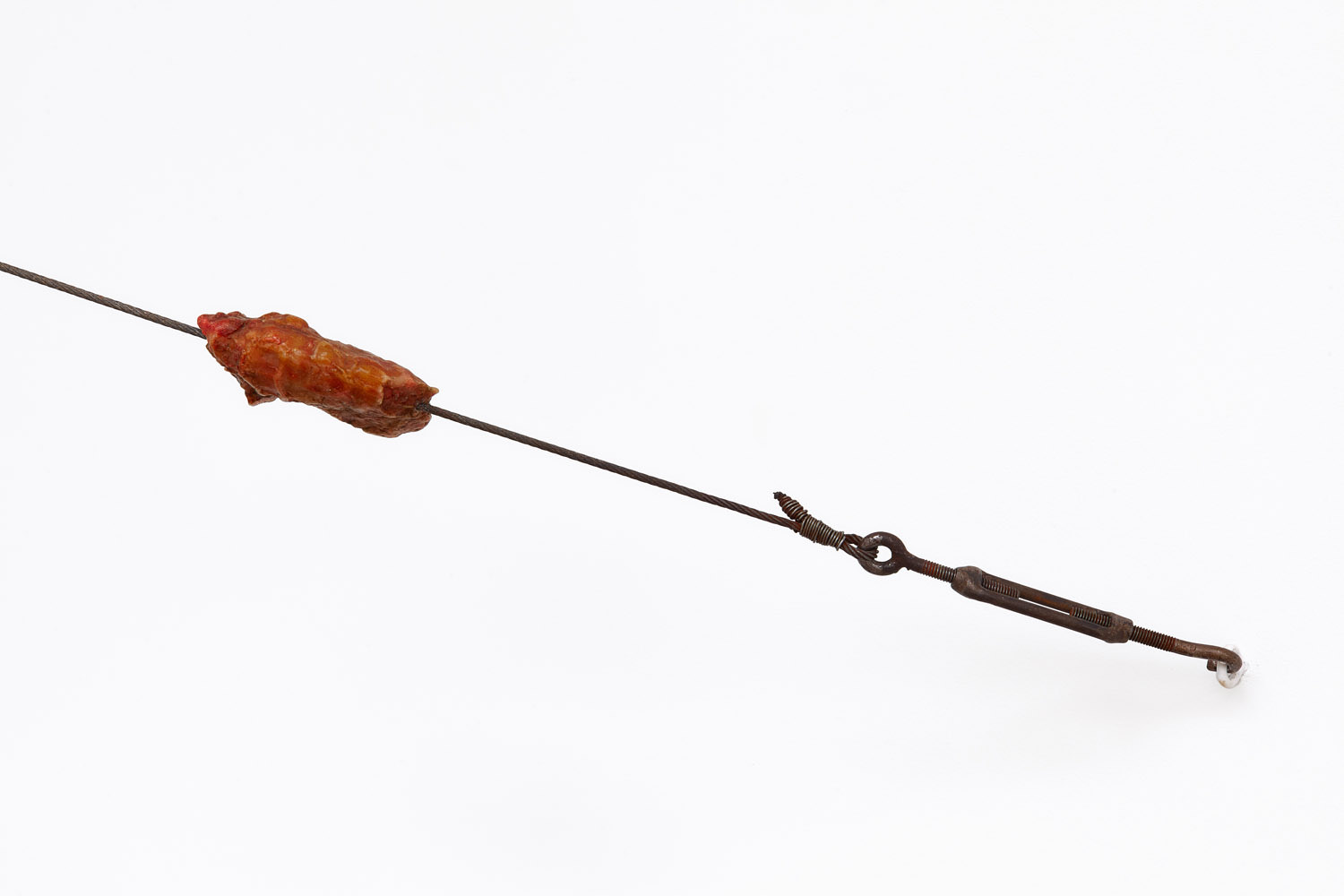Paul Thek, Untitled (Meat Cable), 1968-69. Wax on steel cable with two turnbuckles. 168 x 3 x 2 1/2 in. Photography by Veli-Matti Hoikka. Courtesy of Hannah Hoffman, Los Angeles. © The Estate of George Paul Thek.
I got COVID this autumn, not after taking fourteen flights over the course of the summer working on various projects across Europe, but while leading a mostly solitary life in New York City afterward — go figure. Knock on wood, I only suffered a relatively mild case, with the virus worsening at night true to everything I had previously heard. It’s like a bat (the alleged carrier in the first instance) that sleeps during day and stirs only at night. For weeks before testing positive, the only sign I might have been infected were intermittent, crushing headaches and fatigue, which I haven’t been able to shake more than five weeks later.
Losing my sense of taste and smell, which have yet to fully return, is annoying, although the extent of my palate was a matter of contention in any event. Eating by memory is far less satisfying than you can imagine (even if it certainly didn’t slow down my appetite), and hosting a disease that never seems ready to depart is frustrating and painful. Not too dissimilar from the art world it so profoundly disrupted. After nearly thirty years attending and covering art fairs and auctions — my journalistic beat — this is the longest stint I’ve gone without either, for which I am nothing less than grateful.
Paul Thek, Untitled (Meat Cable), 1968-69. Wax on steel cable with two turnbuckles. 168 x 3 x 2 1/2 in. Photography by Veli-Matti Hoikka. Courtesy of Hannah Hoffman, Los Angeles. © The Estate of George Paul Thek.
And this won’t change until a COVID vaccine is proven and readily available to all, despite a few outliers in Shanghai and Seoul — fairs that carried on in the fall in spite of the obvious exposure to risk. Call it the upside of a tragic pandemic that has yet to abate in terms of affecting and claiming lives: as a result, local gallery attendance has seen a commensurate upswing — a number that had been on the decline as fairs became more pervasive. When all is said and done with the unhinged spreading of the virus, and we feel confident enough to leave our shells, I hope we don’t forget how vital and crucial gallery patronage is to the art ecosystem.
Another unintended benefit of the crisis is that it caused the world to take stock of its collective wellbeing and prioritize what matters in life above and beyond the latest art sensation. If I hear the word “important” bandied around one more time in relation to an ultimately meaningless work of art, I’ll puke. What is vital and essential is health, love of family, and of course art too — in this regard I think of the meat sculptures of Paul Thek, an artist prematurely felled by another pandemic: AIDS. Entombed in a clinical glass or plexi vitrine, a shard of flesh-like substance handcrafted from wax, pigment, and bits of Canal Street plastics reminds us just how exposed and vulnerable we are and will remain, no matter the state of the market or technology.
Paul Thek, Untitled (Meat Cable), 1968-69. Wax on steel cable with two turnbuckles. 168 x 3 x 2 1/2 in. Photography by Veli-Matti Hoikka. Courtesy of Hannah Hoffman, Los Angeles. © The Estate of George Paul Thek.
Back to the nitty-gritty of the art world. In the face of a market deprived of the theater of live events, auction houses have had to react with an unprecedented degree of flexibility, redefining the basic business model to ensure their very survival. This was accomplished with a flood of online sales — I am staging my own single-owner auction, the second in an ongoing series titled “The Hoarder” at Sotheby’s, just before Christmas — that I hope won’t drown the urge to consume.
Among the most shocking phenomenon of the most tumultuous year I can remember is the fact that after bingeing all the content Netflix has on offer while quarantining, a voracious mainstream audience for live-streamed online auctions has developed — to the tune of more than a million viewers for Sotheby’s October evening sale, by far a record in itself. In addition, auction houses have opened retail outlets selling art, cars, and jewelry from the Hamptons to Palm Beach. If the meta-rich aren’t moving, you’d better move to them, and with alacrity.
How does all this affect the rest of the population (like us), the majority of people not honing their tans in times of turbulence and pruning their stock portfolios? Actually, artworks for sale at the lower rungs of the price spectrum are doing better than one would have thought. A new study by art economist guru Clare McAndrew, titled “The New York Art Market Report” (as mentioned in the November 19 edition of the Financial Times), stated that of the three thousand collectors for high-end art worldwide (That’s it? Yikes!), more than half live in New York — and by extension the Hamptons and Palm Beach — and 84% buy artworks for less than $50,000 each and 37% below $10,000. That bodes well for small-to-mid-level galleries and the artists that populate their rosters.
Paul Thek, Untitled (Meat Cable), 1968-69. Wax on steel cable with two turnbuckles. 168 x 3 x 2 1/2 in. Photography by Veli-Matti Hoikka. Courtesy of Hannah Hoffman, Los Angeles. © The Estate of George Paul Thek.
As an avid observer of all things art, I admit I haven’t been to any online viewing rooms (OVR) or digital iterations of art fairs. I don’t like the cumbersome sign-in procedures, and after initially listing all the prices of works on offer, this unusual (for the art world) tendency for transparency has come to pass — from what I’ve heard, anyway. I figure anything good will filter down to Instagram, that democratic, anarchistic wrecking ball, which has democratized access to art for a wide array of participants, exposing more people to art than any other platform on the planet.
I even started my own version, called OOPS (One Outstanding Person Show) on Insta and www.KennySchachter.art to expose and disseminate artists young and old in need of a foothold into the marketplace. It’s gone remarkably well, creating opportunities far beyond the scope of offering a handful of artworks online, including subsequent gallery representation; and for the first time in my career, a collector purchased two works and turned down the de rigueur discount! I’m still reeling from that experience.
In conclusion, none of the above will change whatsoever until we are all safely and effectively COVID vaccinated. Basel-schmasel — it’s a pipedream to think the Hong Kong or even Swiss iterations will occur in 2021; or Frieze, Armory, or any of the ancillaries before that point in time when the pandemic is reduced to a bad dream that actually was. Hopefully, I’ll have my full sense of taste and smell back by then — at which time I’ll even miss the smell of shit — without which going to fairs to view the good, the bad, the ugly, and the over-speculated, which only serve to make the soup more tasty, would be a bore.

